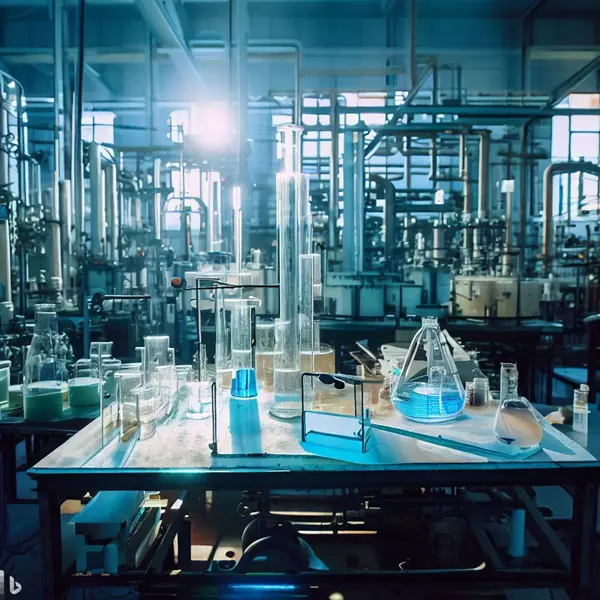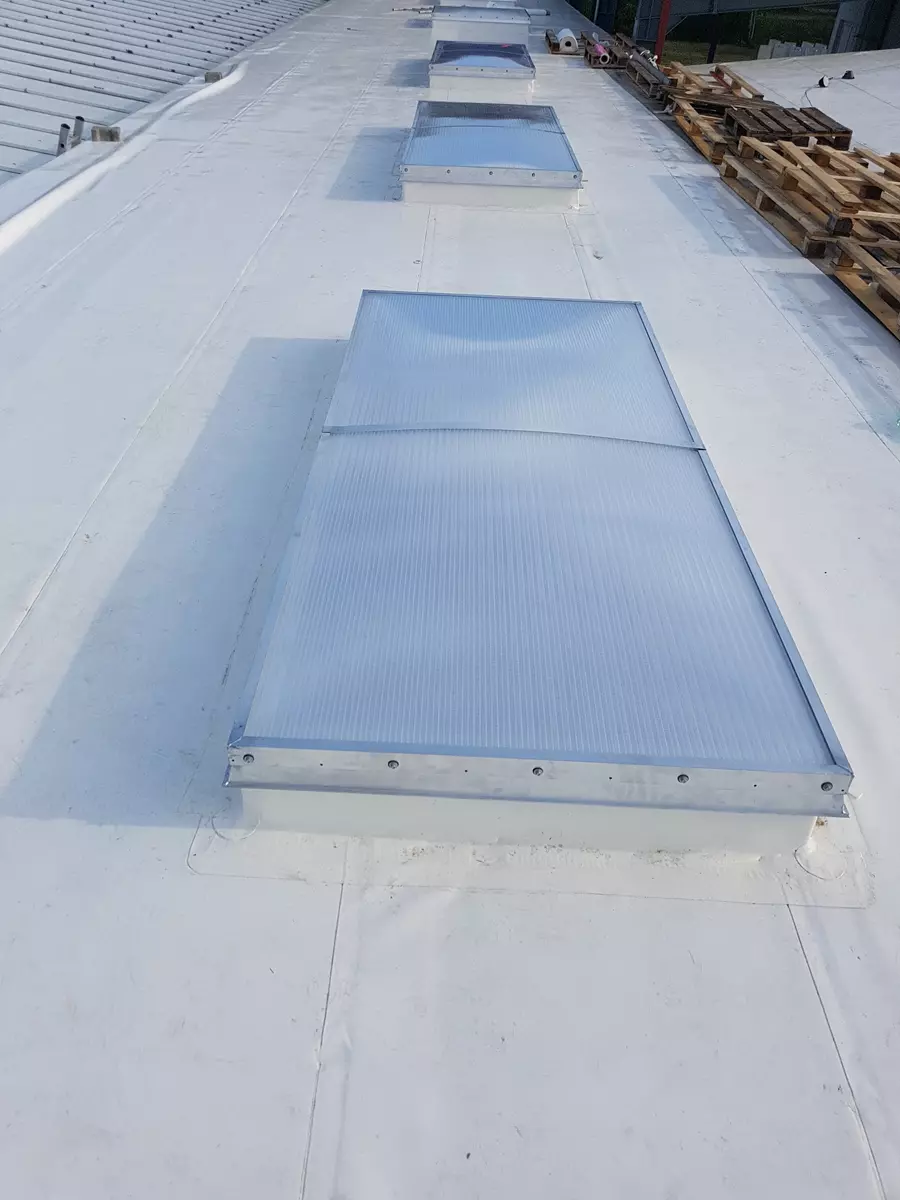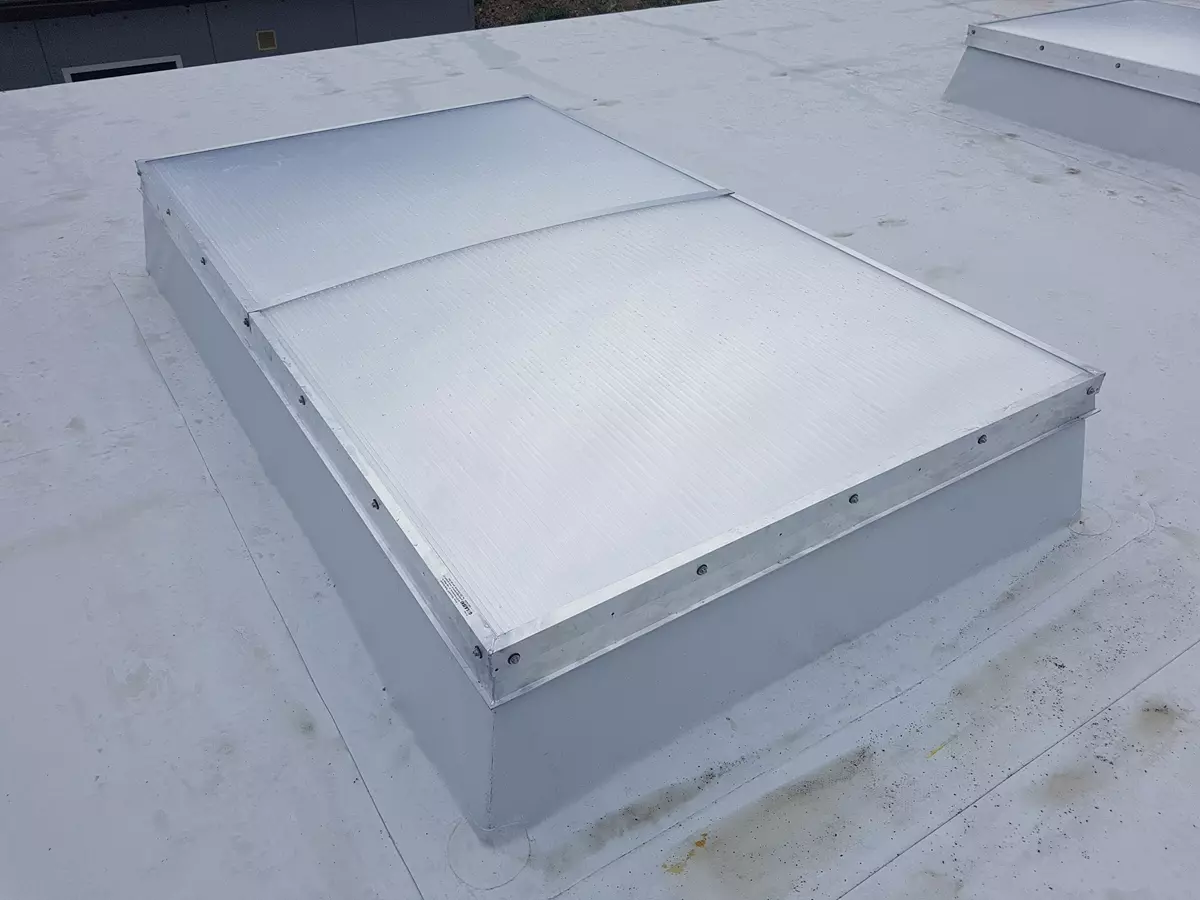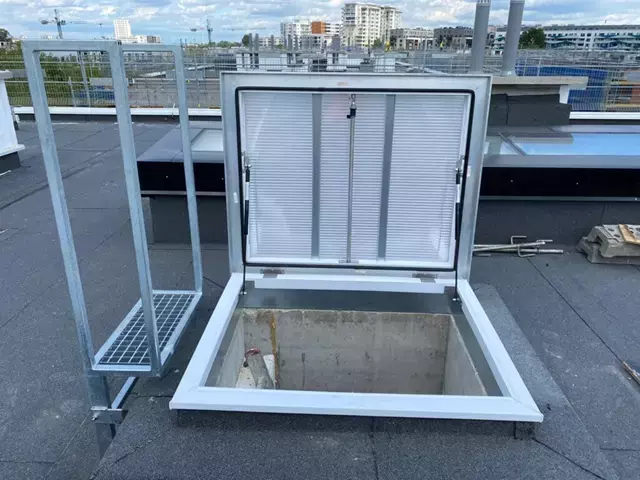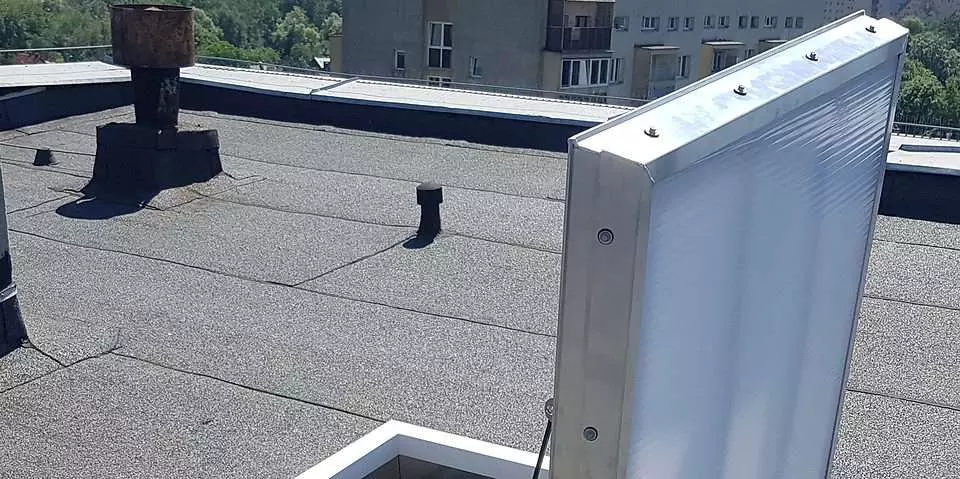Synthesis of Bisphenol A (BPA):
- Reactances: Phenol (C6H6O) and acetone (C3H6O).
- The first step is the condensation of phenol with acetone in the presence of sulfuric acid as a catalyst:
2 C6H6O + C3H6O → C15H16O2 + H2O - The result of this reaction is bisphenol A (C15H16O2) and water.
Condensation of bisphenol A with phosgene:
- Reactances: Bisphenol A (C15H16O2) and phosgene (COCl2).
- Bisphenol A and phosgene undergo a condensation reaction:
C15H16O2 + COCl2 → (C15H16O2)Cl2 + CO2 - This step leads to the production of a monomeric copolymer of bisphenol A and phosgene, in which chlorine atoms are attached to a bisphenol A ring.
Polymerization:
- Reactance: Monomeric copolymer of bisphenol A and phosgene [(C15H16O2)Cl2].
- The copolymer is polymerized in the presence of catalysts such as sodium chloride (NaCl) and sodium hydroxide (NaOH):
n[(C15H16O2)Cl2] → (C15H16O2)n + 2nHCl - This step leads to the formation of polycarbonate, designated as (C15H16O2)n, with the simultaneous separation of hydrogen chloride (HCl) as a by-product.
The polycarbonate manufacturing process for the production of advanced polycarbonate sheets involves the synthesis of bisphenol A (BPA) and the condensation of bisphenol A with phosgene, followed by the polymerization of monomers to produce polycarbonate. All steps in this process require precise monitoring of reaction conditions such as temperature, pressure, and reactant concentration to ensure optimal yield and product quality.
In industrial practice, the process of making polycarbonate is more complex. In addition to the basic steps, there are many factors that can affect the process and the quality of the final product.
Important factors to consider are:
- Choice of raw materials: The quality and purity of phenol, acetone and phosgene are crucial for obtaining high-quality polycarbonate. Therefore, raw materials with the right specifications must be used and carefully analyzed before the process begins.
- Temperature control: The reaction temperature has a direct impact on the reaction rate and product quality. The temperature at different stages of the process must be precisely monitored and controlled to ensure optimal conditions.
- Safety: Phosgene, used in the condensation of bisphenol A, is a hazardous and toxic substance. It is necessary to follow strict safety measures and carry out the process under controlled conditions to minimize the risk to employees and the environment.
- Condensation reaction: The condensation reaction of bisphenol A with phosgene is equilibrium and requires an appropriate balance of reactants and the effective removal of the resulting hydrogen chloride. A suitable phosgene dispenser and optimal mixing conditions are essential for an effective condensation reaction.
- Polymerization: The polymerization process of bisphenol A and phosgene monomers requires the presence of catalysts such as sodium chloride and sodium hydroxide.
Optimal catalyst ratios and control of polymerization time and temperature are crucial to obtain polycarbonate with the right physical and chemical properties.
In conclusion, the polycarbonate manufacturing process for polycarbonate sheet production is a complex chemical process that requires high-tech knowledge and skills.
Precise monitoring and control of reaction parameters and appropriate safety measures are essential to achieve high quality and performance of polycarbonate. Understanding these stages allows chemical engineers to improve the process and develop advanced technologies for producing polycarbonate.
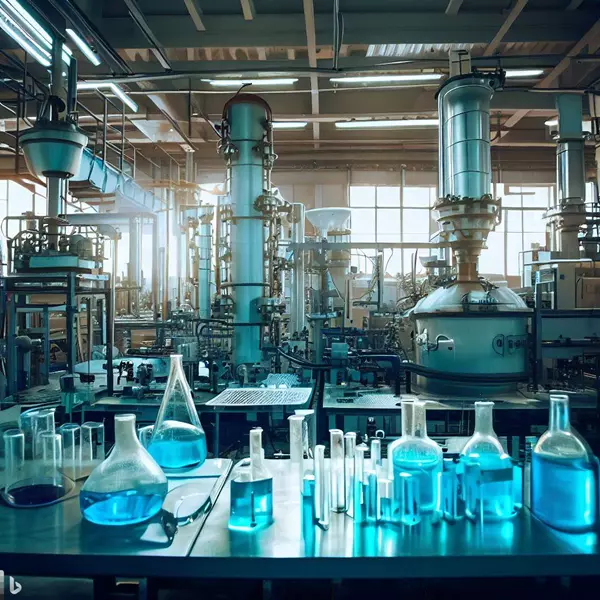
Future directions of development in the polycarbonate production process
- Catalyst optimisation: Research into new catalysts aims to increase the efficiency and selectivity of the polymerisation process, leading to polycarbonate with even better physical and chemical properties.
- Application of membrane reactors: The use of reactor membranes can lead to better separation and recovery of by-products such as hydrogen chloride, which contributes to increased process efficiency and reduced waste.
- Improving recycling technology: Polycarbonate is a durable material, which creates challenges in terms of disposal and recycling. Further research into polycarbonate recycling methods is crucial to reducing environmental impact and the use of secondary materials in production.
- Optimization of reaction conditions: Research into optimal reaction conditions such as temperature, pressure, reactant concentration, and reaction time is aimed at increasing process efficiency and reducing production costs.
- Use of green raw materials: In the context of sustainability, research into the use of green raw materials, such as biophenol instead of phenol, can help reduce environmental impact and achieve greener polycarbonate.
The polycarbonate manufacturing process for the production of advanced polycarbonate sheets is a complex chemical process that requires high-tech knowledge and skills.
Precise monitoring and control of reaction parameters, optimization of raw materials and the use of innovative technologies are key to obtaining polycarbonate of high quality and performance.
Process development research, including catalyst optimization, the use of membrane reactors, the improvement of recycling technology, the optimization of reaction conditions, and the use of green raw materials, aims to further improve the polycarbonate production process and contribute to the sustainable production of advanced polycarbonate sheets.
Polycarbonate sandwich panel manufacturing process
Extrusion (extrusion):
- Mixture preparation: Polycarbonate in the form of granules or powder is combined with additional ingredients such as stabilizers, dyes or additives to improve mechanical properties. This mixture forms the raw material for extrusion.
- Carrying out the process: The raw material is heated and melted in the extruder. A homogeneous polycarbonate mass is formed.
- Plate shaping: The polycarbonate mass is extruded through a plate-shaped nozzle to form a thin layer of polycarbonate of the desired width and thickness.
- Cooling and curing: The newly formed polycarbonate plate passes through cooling zones that lower its temperature, allowing it to cure. In some cases, the hob can also be cooled in special water cooling baths.
- Cutting and trimming: After curing, the plate is cut into desired lengths or shapes using cutting knives or other tools to create finished polycarbonate sheets.
Vacuum forming:
- Mold Preparation: The mold, usually made of metal or plastic, is precisely shaped into the desired shape of the polycarbonate plate.
- Polycarbonate sheet preparation: The polycarbonate sheet is heated to the right temperature to make it flexible and moldable.
- Forming process: A heated polycarbonate sheet is placed over the mold, and then a vacuum is created between the mold and the sheet. Thanks to this vacuum vacuum, the sheet takes on the shape of the mold, adapting to its contours.
- Cooling and curing: After adjusting to the mold, the sheet is cooled to fix the new shape and provide structural stability.
- Removal and post-processing: After curing, the plate is removed from the mold and then subjected to post-processing, such as laser cutting into desired sizes and shapes using cutting tools or cutters. It can also be subjected to further machining processes such as hole drilling, bending or bending to achieve the required geometric properties.
It is worth noting that in addition to extrusion and vacuum forming, there are also other methods for producing polycarbonate sheets, such as manufacturing by ultrasonic welding or multilayer lamination. The choice of production method depends on the requirements of the final product, production costs, scale of production and available technological resources.
Once polycarbonate sheets are manufactured, they can be further processed and used in a variety of applications. They can be cut into smaller panels, shaped, glued, painted or printed to suit specific projects. Polycarbonate sheets are used in many industries such as construction, automotive, lighting, electronics, advertising and many others.
In summary, polycarbonate sheets can be produced mainly by two methods: extrusion and vacuum forming. Both methods have their advantages and are tailored to different production needs and requirements. The process of making polycarbonate sheets includes raw material preparation, shaping, cooling and curing, followed by post-processing. The produced plates can be subjected to further processing processes in order to adapt them to a specific application.
Polycarbonate sheets are widely used in the production of skylights and roof hatches, contributing to the introduction of natural light into buildings and providing easy access to the roof.
Natural light is an extremely important factor influencing the atmosphere and functionality of rooms. Rooflights, made of high-quality polycarbonate panels, are the perfect solution to make the most of natural sunlight. Thanks to their transparency, polycarbonate sheets allow light to pass through, optimizing interior lighting and creating a pleasant atmosphere.
The benefits of skylights are numerous. Firstly, the natural light introduced by these products has a positive effect on the well-being and health of residents, improving sleep quality, concentration and general well-being. Because sunlight is easier on the eyes than artificial lighting, using natural light can reduce eye strain and improve the comfort of working and studying.
In addition, skylights in the roof contribute to the reduction of electricity consumption, which translates into financial and ecological savings. By making the most of natural light, you can reduce the need for artificial lighting during the day, leading to less electricity consumption and reduced carbon emissions.
Roof access windows, also using polycarbonate sheets, play a key role in ensuring safe access to the roof. They provide a practical solution for both residential and commercial buildings. Made of durable and durable materials such as polycarbonate sheets, they not only provide easy access to the roof, but also protection from the weather and the effects of external factors.
Polycarbonate, due to its beneficial properties, is used in various elements of urban sewage systems. Here are some examples of elements that can be manufactured from polycarbonate:
- Sewer manholes: Polycarbonate is often used in the manufacture of sewer manholes. These sumps serve as access points to the sewer system, allowing inspection, cleaning, and maintenance. Polycarbonate as a structural material provides strength, resistance to weather conditions and corrosion, which is crucial for elements of urban infrastructure.
- Manhole guards and covers: Many manholes are equipped with guards and covers to protect access to the interior and prevent accidental accidents. Sump covers made of polycarbonate are lightweight, durable, and resistant to mechanical stress, while allowing easy access to the sump when needed.
- Pipes and ducts: Polycarbonate can also be used to make sewer pipes and ducts. Sewer pipes made of polycarbonate are lightweight, corrosion-resistant, and easy to install. They also have good resistance to chemicals, which is important when conducting waste substances.
- Grease separators: Grease separators are often used in sewer systems to trap and separate grease and other petroleum substances from flowing water. Polycarbonate can be used in the production of grease separators due to its resistance to chemical substances and ease of hygiene.
- Transitions and Reductions: Various types of passages and reductions may be required in sewer systems to allow different sizes of pipes and ducts to connect seamlessly. Polycarbonate can be used to make such components because it is easy to form and adapt to different dimensions and configurations.
Elements of municipal sewage systems made of polycarbonate are characterized by durability, resistance to weather conditions, ease of installation and low maintenance costs. In addition, polycarbonate is also
If you are looking for high-quality polycarbonate roof system components, I highly recommend contacting our Gulajski company. As a Polish manufacturer, Gulajski stands out on the market by offering the highest quality products that are manufactured in Polish.
It is worth emphasizing that the Gulayski Company, unlike many other manufacturers, does not use Chinese semi-finished products. So you can be sure that our products are made from the best materials available and meet the highest quality standards. Using local materials also means that you support the Polish economy and the development of domestic businesses.
To purchase polycarbonate roof system elements from our Gulajski company, please contact us at the phone number: +48 (32) 236 30 05. Our qualified employees will be happy to provide you with professional assistance, answer your questions and present your options.
By choosing Gulajski, you can be sure that you will receive high-quality products that will meet your expectations. Not only will you benefit from the benefits of polycarbonate, such as excellent light properties and durability, but you will also be sure that you are supporting local production and economy.
Do not hesitate, contact us today and provide yourself with professional Polish roofing solutions based on polycarbonate tiles.
Autor: Tomasz Matuszek; Dział Marketingu - Firma Gulajski

